Ten shocking construction company collapses in Australia that left $4.25bn in debt
These companies were responsible for debts topping $4.25bn, with the repercussions tearing through small and medium businesses and devastating home buyers. Here’s how they unfolded.
These 10 building companies were responsible for debts topping $4.25bn, with the repercussions tearing through small and medium businesses, devastating home buyers and killing family budgets.
Here’s what happened in some of Australia’s worst ever construction company failures, how some of the companies’ debts have ballooned since they first collapsed and what’s happening with them now.
Probuild
Directors: Luke Stambolis, Charles Henwood, Paul Foley, Nicholas Gaudry
Estimated debts: $1.4bn as of August 2024
What happened: Probuild’s 18 companies went into administration in March 2022 after its by South African majority owner Wilson Bayly Holmes-Ovcon withdrew funding.
According to the latest report lodged with ASIC, liabilities topped $1.39bn – the vast majority to unsecured creditors.
Subbies walked off Probuild projects around the country in the days before, including the $375m tower at 443 Queen St in Brisbane and the $300m Elizabeth North Stage 2 development in Melbourne.
Other projects on its books were Melbourne’s $1bn, 1376-apartment West Side Place tower, billed as Victoria’s largest residential development and including a Ritz-Carlton hotel; $400m UNO Melbourne; a $500m office building in Docklands; $1bn Sydney project The Ribbon at Darling Harbour; and the MLC Centre retail and entertainment complex in the heart of Sydney’s CBD.
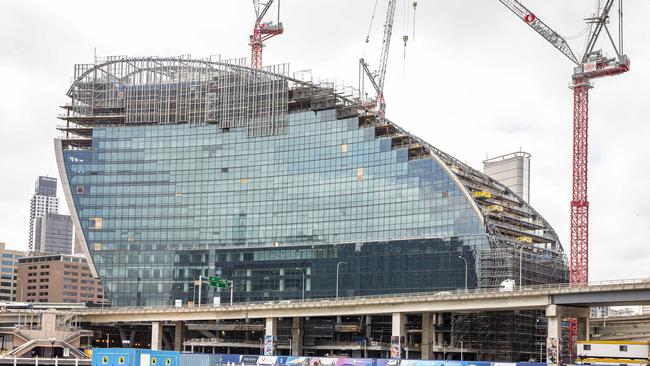
Some individual subcontractors were owed as much as $250,000 each, with some smaller businesses themselves succumbing in its wake, including Hitec Glazing, which had to let 137 staff go.
Further pain was saved when Victorian builder Roberts Co paid $1 for Probuild’s Victorian assets, taking on projects and staff in that state and reducing Probuild’s liabilities by almost $250m.
Smaller creditors – owed $25,000 or less – have received their money back during Probuild’s administration, as did employees owed $16m between them.
The deal didn’t work out so well for Roberts Co, which itself fell into administration last month, closing its Victorian sites.
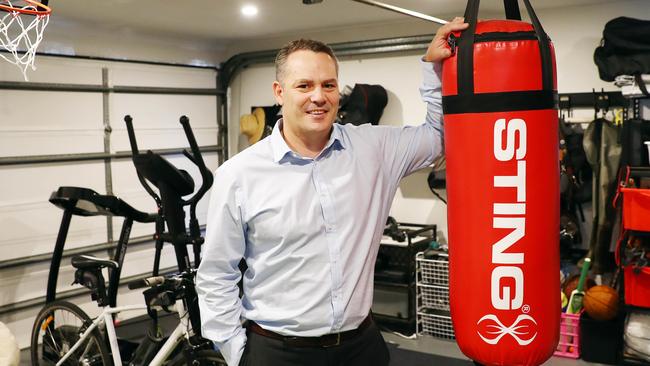
Raptis Group
Director: James “Jim” Raptis, 78
Estimated debts: $1bn-plus over company history
What happened: This indefatigable Gold Coast developer is reigning national champion of coming back from the brink – although creditors of his companies have not been so lucky.
The first Raptis meltdown, in 1991, left investors owed $65 million but the company worked its way out of trouble after striking a deal in which creditors recovered 3.5c in the dollar.
In 2008, under the weight of almost $1 billion in debt it again survived, also through a deed of company arrangement struck with creditors in 2009.
In 2014 and 2015, two Raptis companies went into liquidation after developing a three-tower project at Labrador on the Gold Coast, with debts totalling $11m.
The Raptis Group returned to the ASX in 2015 after an eight-year suspension, after somehow converting a $30 million tax bill into just a $6 debt.
The value of its shares – largely held by creditors – was likewise whittled to almost nothing.
Mr Raptis has successfully battled regulator attempts to strip his Qld builder licence and managed to settle a $110m claim and asset freeze from the ATO with no discernible disruption to his operations.
That case – in which the ATO alleged apparent “tax avoidance arrangements” by the Raptis group – was dropped in January.
While the public Raptis company is yet to return to property development – or to significant profitability – Mr Raptis’s private companies are keeping busy with hundreds of millions of dollars worth of Gold Coast apartment towers, including Pearl at Main Beach and The Sterling at Broadbeach.

Caydon Property Group
Director: Joseph James “Joe” Russo, 53
Estimated debts: More than $860m, at time of collapse
What happened: Melbourne-based Caydon Property Group had about $1bn of projects under development when it went into administration in July 2022.
A key lender of Caydon, OCP Asia, called in McGrathNicol as receivers of 40 Caydon companies.
Caydon’s projects were mostly based in Melbourne, but it also planned an 18-storey apartment project opposite North Burleigh Surf Lifesaving Club on the Gold Coast.
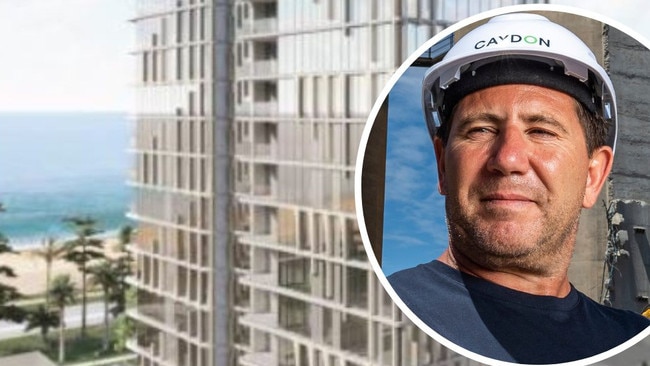
It also had a 31-storey apartment tower planned at Harris Park, near Sydney’s Parramatta.
It had embarked on an ill-fated American expansion just before its collapse, opening an office in Houston, Texas, and buying up properties it planned to redevelop.
A five-bedroom concrete mansion, built by Caydon in Los Angeles, hit the market for $US43m last year, but has since been marked down to $US35m and was still listed for sale this week.
As of the latest administrator’s report, lodged in October last year, the company still owed more than $486m to creditors.
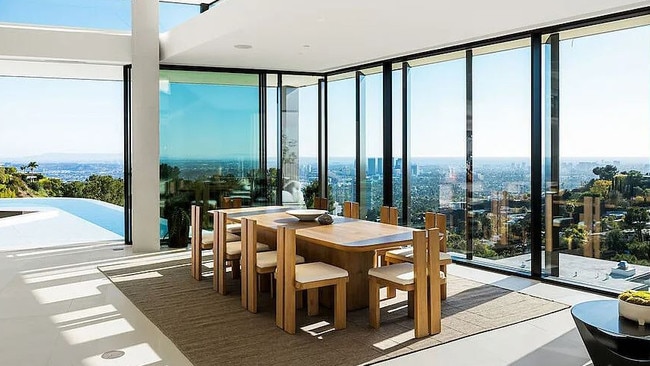
PBS Building
Director: Ian Carter, 60, and Adam Moore, 47
Estimated debts: More than $260m, at time of collapse
What happened: Canberra-based national building giant PBS Building went into administration in March 2023, a day after it locked up and abandoned development sites projects are scattered from Sydney to Queensland’s Hervey Bay.
The group had 24 projects worth $439m under way including a 19-level tower and a major townhouse project on the Gold Coast.
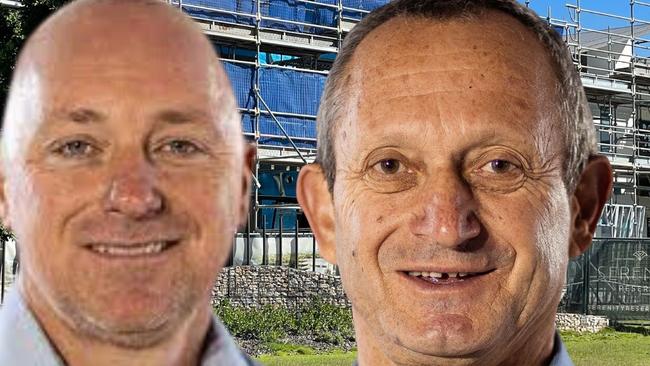
PBS had also worked on the Hervey Bay Wetside Water Education Park, Botanica Residences, Latitude25 RV Lifestyle community, Wheller on the Park stages 3 & 4 and The Melbourne Residences in Brisbane.
The latest liquidator reports on the companies, lodged with ASIC in December last year, showed they still owed more than $264m to more than 800 unsecured creditors, with further debts still outstanding to secured creditors.
It wasn’t the first time PBS struck solvency struggles – a related company Ply (ACT) went into administration in 2013, leaving debts of $42m to subcontractors and suppliers.
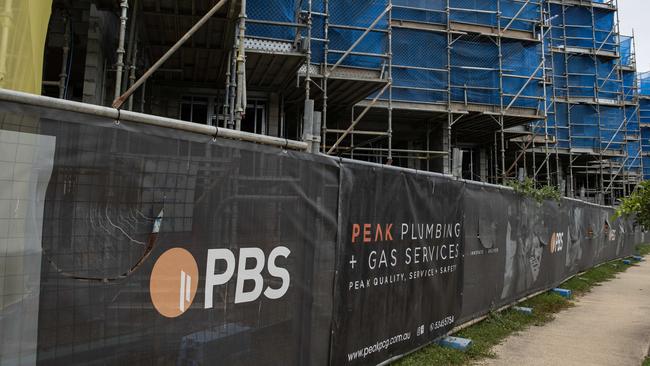
Grocon
Director: Daniel Grollo
Estimated debts: $170m-plus, as of May 2024
What happened: The 73-year history of one of Australia’s biggest builders came crashing down at the end of 2020, when administrators were appointed to 43 of its companies in November, with 88 Grocon companies falling into administration by February 2021.
The family company, started by Luigi Grollo on 1928, had grown steadily over the decades and had worked on some of the world’s most iconic buildings including Dubai’s Burj Khalifa and Melbourne’s Eureka Tower as well as stadiums, apartments and commercial projects Australia-wide.
Grocon companies were embroiled in court action against Infrastructure NSW over the group’s work on Sydney’s Central Barangaroo project, which the government department settled in March 2024.
The latest reports filed by liquidators of just three Grocon companies showed creditors were still owed more than $170m.
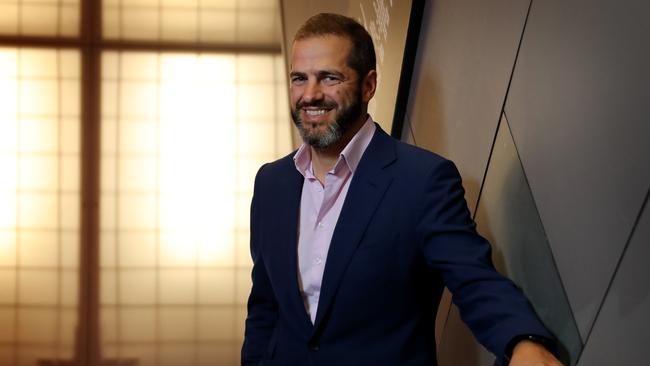
Porter Davis
Directors: Anthony Roberts and Bruno Santi, 67
Estimated debts: $147m at time of collapse
What happened: Porter Davis, which was the 12th largest residential builder in Australia, collapsed at the end of March 2023, leaving 1500 unfinished homes in Victoria and a further 200 in Queensland.
The Melbourne-based builder had a further 779 clients who had paid deposits, but where work had not started on their projects when liquidators Grant Thornton was appointed.
Mr Roberts, who is well-known in the racing industry having operated Chesapeake Thoroughbreds for many years, was reported to have tipped up to $33m into the company in the months before its collapse.
Homeowners grappling with uncertainty over their incomplete builds were further traumatised when their sites were vandalised and ransacked, reportedly by unpaid subcontractors.
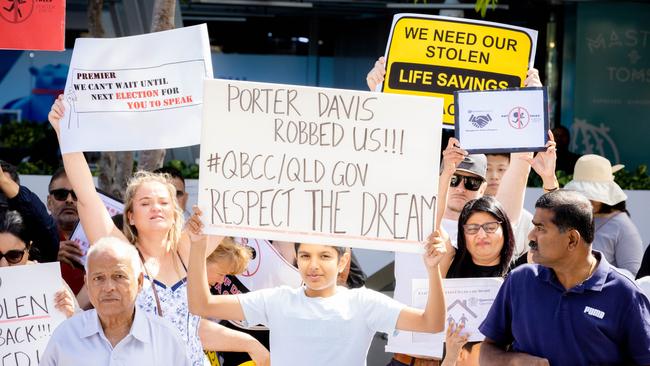
Descon Group Australia
Director: Danny Isaac, 38
Estimated debts: More than $134m, as of March 2025
What happened: Descon and its related Adcon Group worked on major high-rise apartment projects in Queensland, NSW and Victoria and also won major public contracts to build key railway stations and tunnels in Melbourne.
More than 15 companies in the Descon group have been in administration or liquidation since last year, with the full scale of debt still being tallied.
Claims of more than $760m have been made, however much of that total is related party debt and duplicated security claims.
Building the billion-dollar business was quite the achievement for Mr Isaac – who launched the group as an undischarged bankrupt after changing his name and moving from Western Australia.
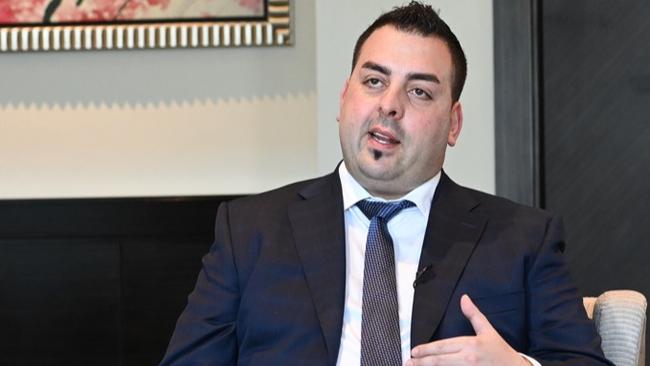
Mr Isaac, whose former name was Sami Adib, became director of more than 20 companies, obtained NSW and Qld builder licences and took out billions of dollars in loans – right under the nose of authorities. He’s said he was not aware he was bankrupt from 2011 until 2020 and has since been discharged.
However, the tax office is seeking to bankrupt Mr Isaac again over personal tax debt and penalty notices totalling $12.1m. Mr Isaac is defending the action and has proposed a deed of company arrangement with creditors to save his companies from liquidation.
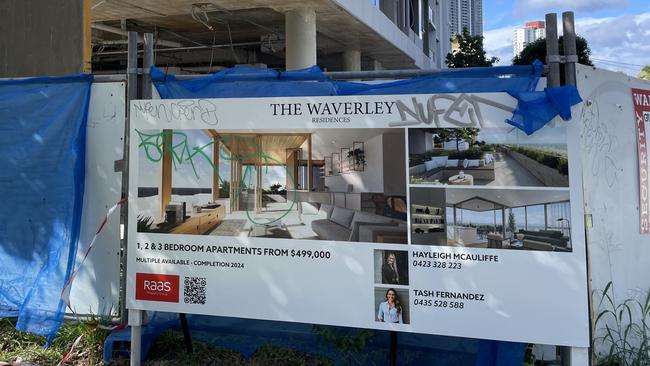
Privium
Director: Robert Harder
Estimated debts: $122m at time of collapse
What happened: The failure of Privium Group, once one of Australia’s top 10 home builders, in late 2021 sent shockwaves through the construction sector and left more than 700 unfinished homes across the country.
In a public examination in November last year, the Federal Court of heard Privium declared an $18m dividend in 2020, of which the court heard more than $2m went to charities called The Promise and Love Your World. Privium collapsed the following year owing $80m.
The court also heard Privium founder and director Mr Harder, who is not accused of any wrongdoing, planned to establish his own cryptocurrency and set up a managed investment scheme using blockchain technology.
The public examination into Privium’s demise is set to continue in the Federal Court of Brisbane next week.
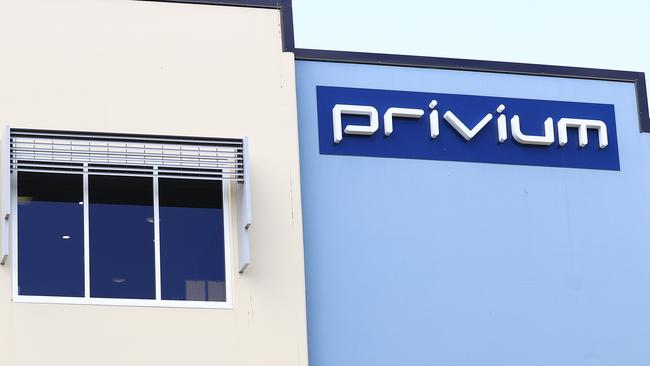
Allroads
Directors: Steven Jenkins, 44 and Jon Fulton, 43.
Estimated debts: $83m at time of collapse
What happened: Two companies of his civil construction firm went into liquidation in March 2024, with initial reports indicating they owed $83m to creditors.
Allroads had its headquarters at Brisbane’s Larapinta and was working on road and defence projects in Brisbane, Townsville and the Gold Coast worth more than $200m.
Among the projects left in limbo were a top-secret $50m defence force project at Shoalwater Bay and a roads and drains project for the Australia Singapore Military Training Initiative under contractor Laing O’Rourke.
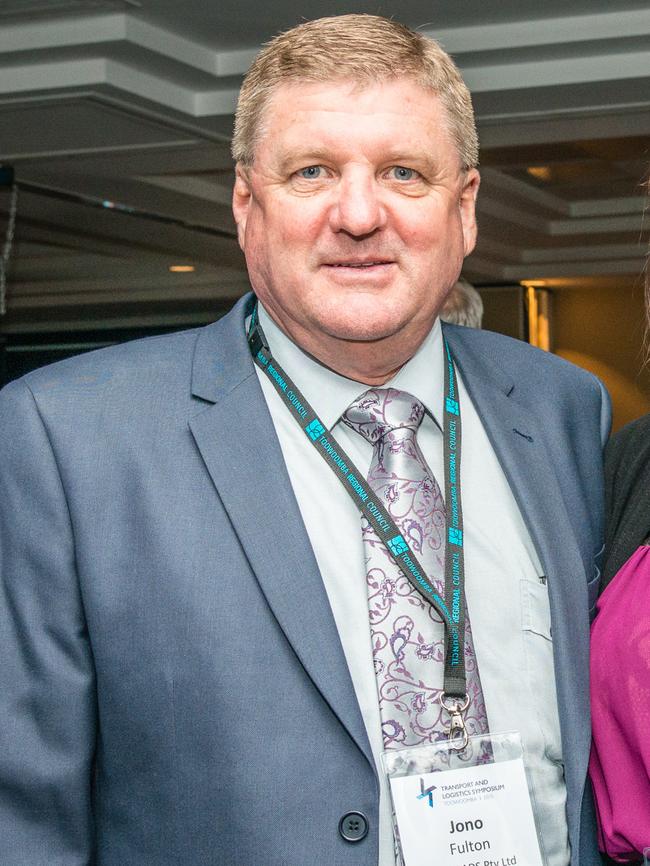
Allroads was also part of a massive $35 million project to build critical infrastructure at Townsville’s Lavarack Barracks and RAAF Base, was near completion of a crucial $11.7 million upgrade to widen Redbank Plains Rd, and was working on the Brisbane Metro Depot for Brisbane City Council.
Allroads collapsed after Enviropipes, a pipe supply company, commenced a winding up application in the Supreme Court in Queensland.
The latest report on Allroads Plant, lodged by liquidators in August last year, said that company still owed $41.5m to creditors.
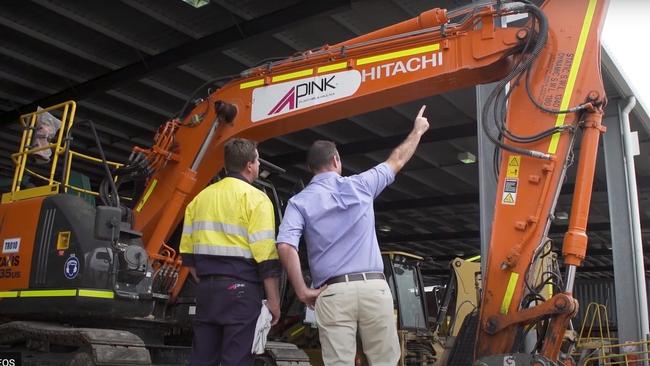
ABD Group
Director: Raffaele Aiello, 53
Estimated debts: $80m at time of collapse
What happened: ABD, a builder of Melbourne high-rises owed more than $80m when it called administrators and then was wound up in November 2021. Receivers were called in a month later.
The company still owed almost $40m to secured creditors and $24.2m to unsecured creditors as of the administrators’ latest report, lodged in January this year.
ABD had been working on major projects including the Bensons Property Group apartment development, Liberty One, in the suburb of Footscray.
It was also working on Suleman Group’s 330-apartment Union Quarter build-to-rent project in Spotswood. Its subsidiary Marcus Group also stopped work on jobs that included a 53-unit project in the Melbourne suburb of Kew.
Mr Aiello’s Victorian builder licence was suspended in August 2022, with the suspension set to expire in May next year. He’s also been bankrupt since November 2022.





To join the conversation, please log in. Don't have an account? Register
Join the conversation, you are commenting as Logout